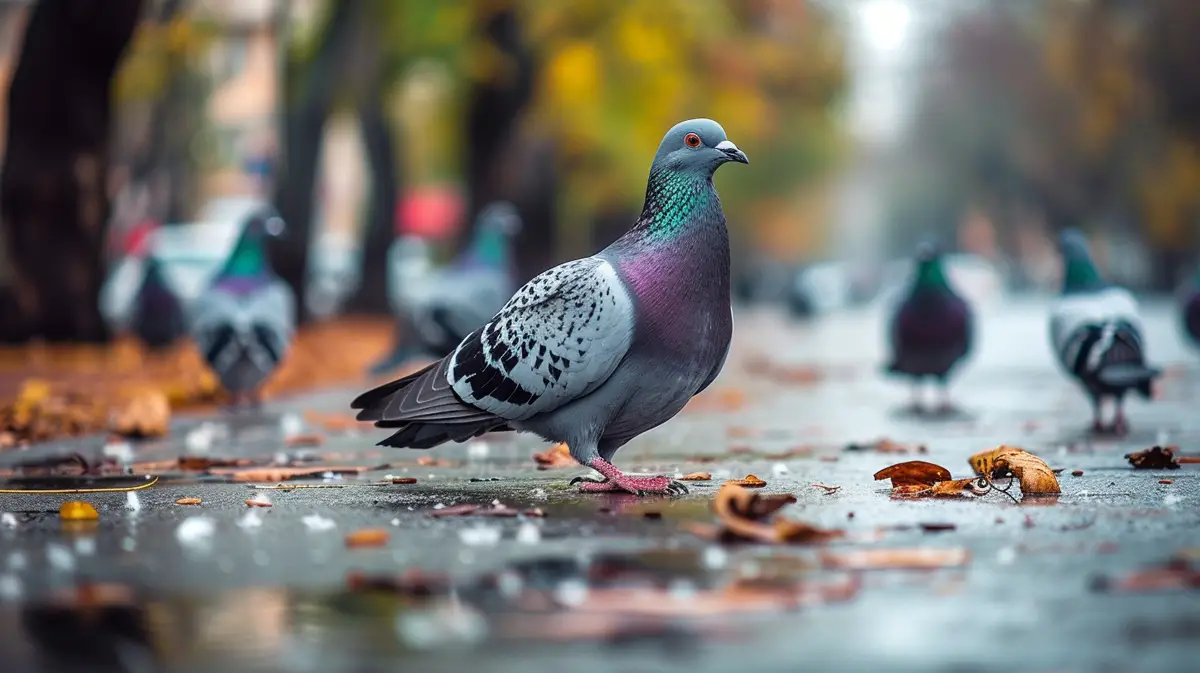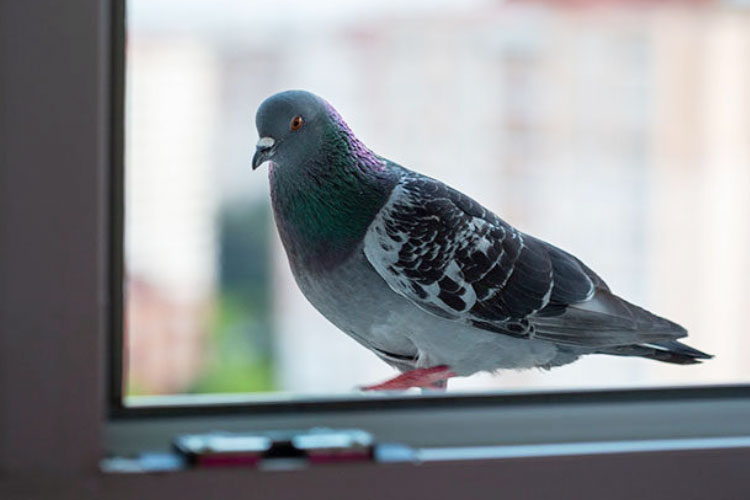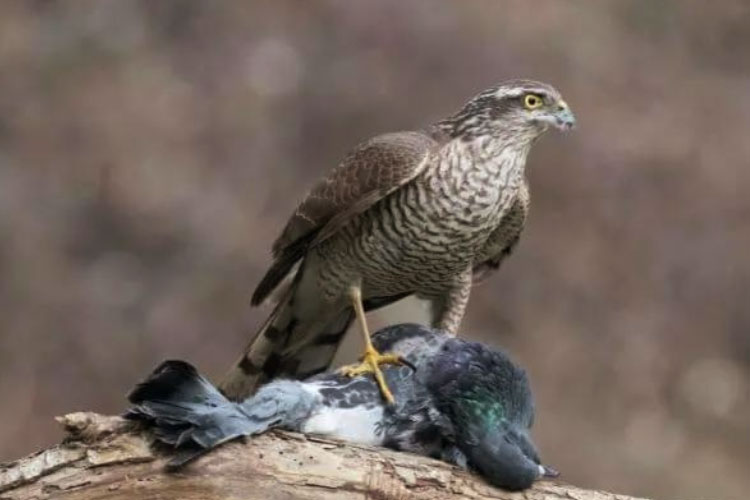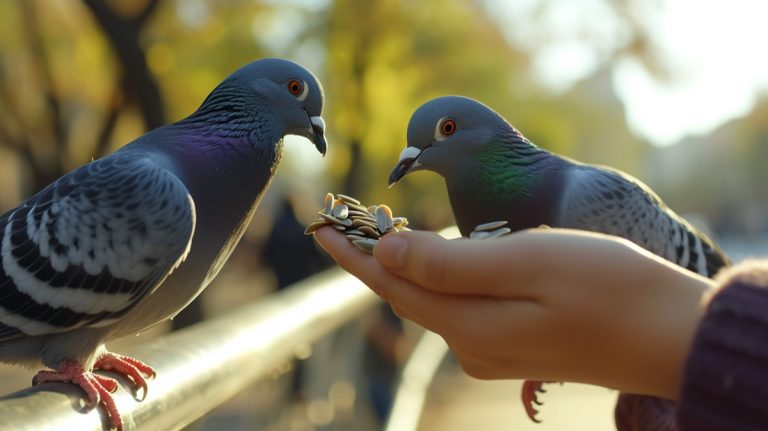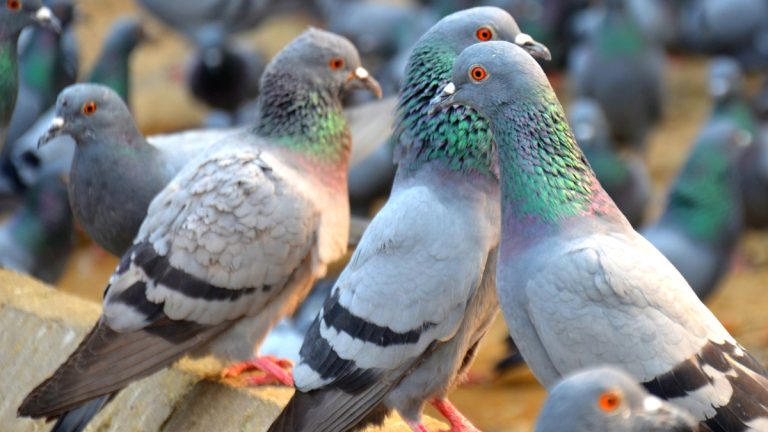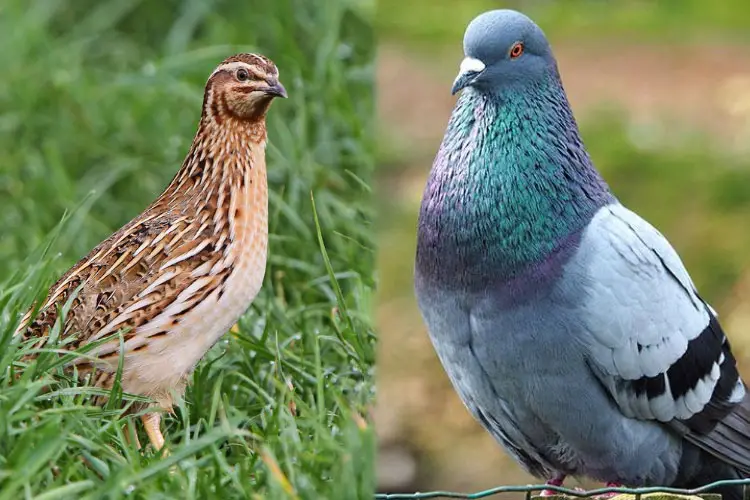Pigeons’ Fearless Interaction: Understanding Why They’re Unafraid of Humans
Have you ever wondered why pigeons seem to have no fear of humans? It’s a common sight in cities and parks to see these birds casually walking or flying around, seemingly unfazed by our presence. As an avid observer of nature, I’ve always been intrigued by this behavior and decided to delve deeper into the reasons behind it. In this article, I’ll explore the fascinating world of pigeons and uncover the secrets behind their apparent fearlessness towards us humans. Get ready to discover the surprising factors that contribute to pigeons’ unique behavior and how they have adapted to coexist with us in urban environments.
Pigeons’ Adaptation to Urban Environments
I’ve always been fascinated by the way pigeons seem to coexist with humans in urban environments without any fear. It’s as if they have adapted to the hustle and bustle of city life in a way that other birds haven’t quite managed. In this section, I’ll delve into the various adaptations that pigeons have undergone to thrive in urban settings.
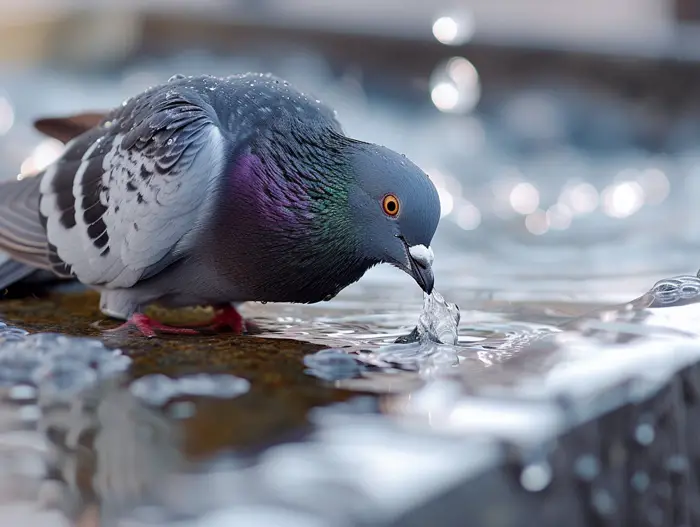
1. Roosting and Nesting
One of the key aspects of pigeons’ adaptation to urban environments is their ability to find suitable roosting and nesting sites. Unlike other bird species that rely on secluded trees or natural habitats, pigeons have made the concrete jungle their home. They often nest on ledges, rooftops, and even in small crevices of buildings. This behavior allows them to take advantage of the tall structures that are abundant in cities.
2. Diet Flexibility
Another remarkable trait of pigeons is their ability to adapt and thrive on a wide variety of food sources. While their natural diet may consist of grains, seeds, and fruits, they have become highly adaptable and can survive on human-provided food as well. Pigeons can often be seen scavenging for scraps in parks, streets, and even near outdoor dining areas. This flexibility in their diet has undoubtedly contributed to their success in urban areas.
3. Tolerance to Human Activity
Perhaps the most striking adaptation of pigeons to urban environments is their tolerance and adaptation to human presence and activity. Unlike many other bird species, pigeons have learned to coexist with humans without being deterred by our presence. They have become accustomed to the constant noise, movement, and commotion that urban environments bring. This behavior can be attributed to their long history of interacting with humans, dating back to ancient times when they were domesticated and used as messengers.
4. Enhanced Spatial Awareness
Pigeons display an impressive sense of spatial awareness that aids them in navigating urban landscapes. They are able to efficiently navigate through dense structures, such as buildings and streets, with ease. Their exceptional homing abilities allow them to fly long distances and return to their chosen location, even in unfamiliar territories. This spatial awareness has undoubtedly contributed to their successful adaptation to urban environments.
The Historical Relationship between Pigeons and Humans
Throughout history, pigeons have had a unique and fascinating relationship with humans. Let’s take a look at some key aspects of this historical connection:
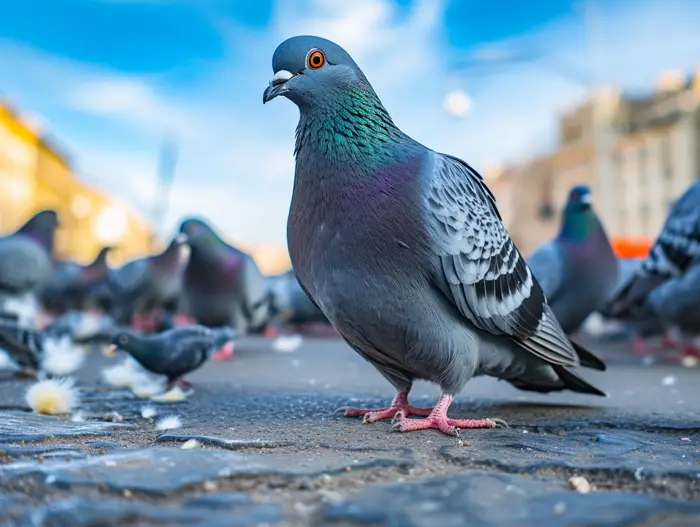
Symbols of Communication and Messenger Birds
Pigeons have long been recognized for their ability to carry messages across long distances. This special quality has been utilized by humans for centuries. In ancient times, pigeons were valued as messengers, allowing people to communicate over long distances before the invention of advanced technology. Even in modern wars, pigeons played a crucial role in delivering messages between troops on the frontlines and their headquarters.
Pigeons as Domesticated Birds
Humans have domesticated pigeons for thousands of years. These birds were bred for various purposes, such as racing, show exhibitions, and even as a source of food. People have developed different pigeon breeds with unique traits and appearances. This long history of domestication has resulted in a deep bond and understanding between pigeons and humans.
Pigeons in Art and Culture
Pigeons have made their way into our art, culture, and folklore. They have been featured in paintings, sculptures, and literature. In many cities around the world, pigeons are considered symbols of urban life. Their presence in public spaces, parks, and squares has become an integral part of the cultural landscape.
Pigeons as Wildlife in Urban Environments
Despite their domestication, pigeons have also managed to adapt to urban environments and live as wildlife. They are comfortable with human presence and thrive in cities around the globe. Their ability to find food and shelter in urban structures and their resilience to noise and pollution have allowed them to survive and even flourish in these settings.
Pigeons and Human Interaction
The historical relationship between pigeons and humans has resulted in a unique level of comfort and familiarity. Pigeons seem to recognize that humans provide food and shelter, and in turn, they have become accustomed to our presence. This level of interaction is quite rare in the animal kingdom and highlights the special bond between pigeons and humans.
The historical relationship between pigeons and humans is rich and diverse. From being messenger birds to domesticated pets, pigeons have played various roles in our lives. Their presence in art and culture, their adaptation to urban environments, and their interaction with humans make them truly remarkable creatures.
Pigeons’ Ability to Recognize Harmless Intentions
Have you ever wondered why pigeons seem to be so comfortable around humans? It’s because of their remarkable ability to recognize harmless intentions. Pigeons have adapted to urban environments, where they regularly encounter people going about their daily lives. Through their interactions with humans, they have learned to distinguish between harmful and non-harmful behaviors.
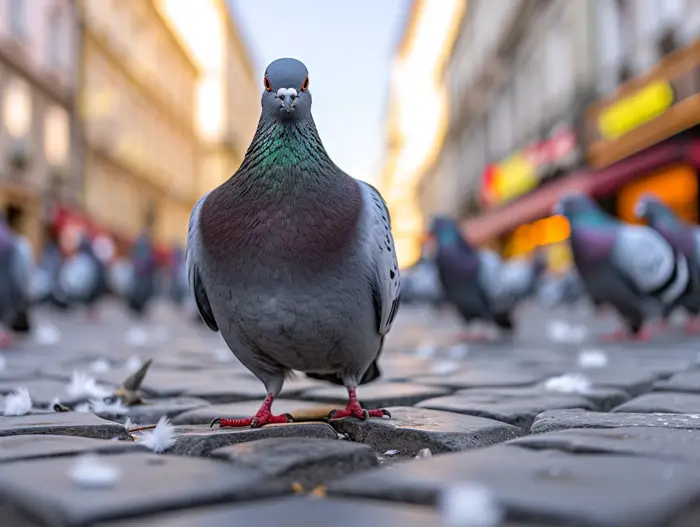
Pigeons are not afraid of humans because they have evolved to understand that we are not a threat to them.
Here are some key factors that contribute to pigeons’ ability to recognize harmless intentions:
- Consistent Presence: Pigeons have been living alongside humans for thousands of years. Over time, they have become familiar with our presence and have realized that we are not out to harm them. As a result, they have learned to feel safe in our presence.
- Observational Learning: Pigeons are highly intelligent birds and are capable of observational learning. They watch and learn from the behavior of other pigeons, as well as from humans. When they see other pigeons coexisting peacefully with humans, it reinforces their understanding that humans are not a threat.
- Body Language: Pigeons are skilled at reading body language. They can interpret our gestures, facial expressions, and even the tone of our voice. When they see that we are calm and relaxed, they understand that we mean no harm.
- Positive Reinforcement: Pigeons are quick learners and respond well to positive reinforcement. When we feed them or show them kindness, they associate humans with positive experiences. This further strengthens their perception that we are not a danger to them.
By recognizing harmless intentions, pigeons are able to coexist peacefully with humans in urban environments. They have developed a unique level of comfort and familiarity with us, which is both fascinating and endearing.
It’s important to note that while pigeons may be comfortable around humans, it is still crucial to respect their space and not disturb or harm them. Let’s continue to appreciate these intelligent and adaptable creatures that have found their place in our urban world.
Pigeons’ Dependence on Human Food Sources
As I mentioned earlier, one of the key reasons why pigeons are not afraid of humans is their dependence on human food sources. These adaptable birds have learned to take advantage of the abundant food that we provide in urban environments.
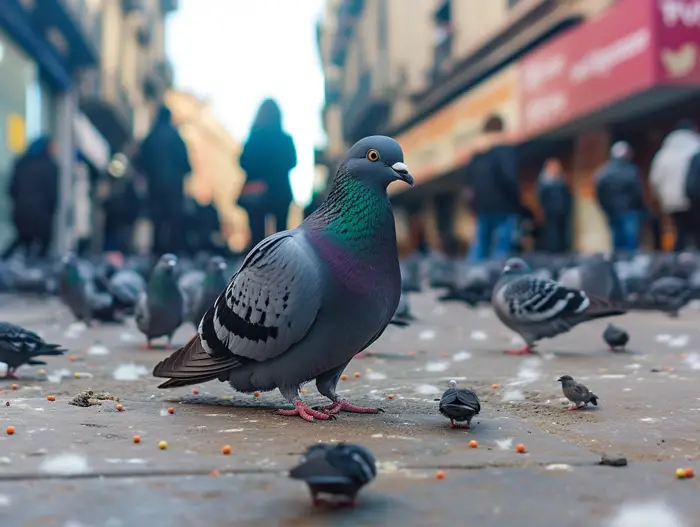
Here are a few important points to understand about pigeons’ reliance on human food sources:
- Scavengers by Nature: Pigeons have always been opportunistic feeders, and their ability to scavenge for food has helped them thrive in urban areas. They have adapted to eating a wide range of food items and are not picky eaters.
- Human Food Waste: Pigeons have become highly skilled at finding and devouring the scraps of food that humans leave behind. Whether it’s crumbs dropped on the sidewalk or discarded fast food leftovers, pigeons are quick to seize these opportunities.
- Feeding Habits: Pigeons have a feeding pattern known as “pecking order,” where the most dominant pigeon gets first access to the food. This hierarchy ensures that even in areas with a high concentration of pigeons, they can still find enough food to survive.
- Feeding Hotspots: Pigeons have learned to identify popular feeding locations, such as parks, plazas, and outdoor seating areas of restaurants. These places provide a consistent supply of food and are often frequented by humans.
- Observational Learning: Pigeons are highly observant creatures. They have learned to associate certain human behaviors with the presence of food. For example, they recognize that when humans sit down to eat, there is a higher chance of food becoming available.
To summarize, pigeons have learned to depend on human food sources due to their adaptive nature and ability to scavenge. Their opportunistic feeding habits and observational learning have helped them thrive in urban environments. This reliance on human-provided food also contributes to their comfort around humans.
Pigeons’ Social Behavior and Perception of Humans
When it comes to pigeons, their social behavior and perception of humans play a significant role in their comfort around us. Let’s explore some fascinating aspects of their social behavior and how they perceive us.
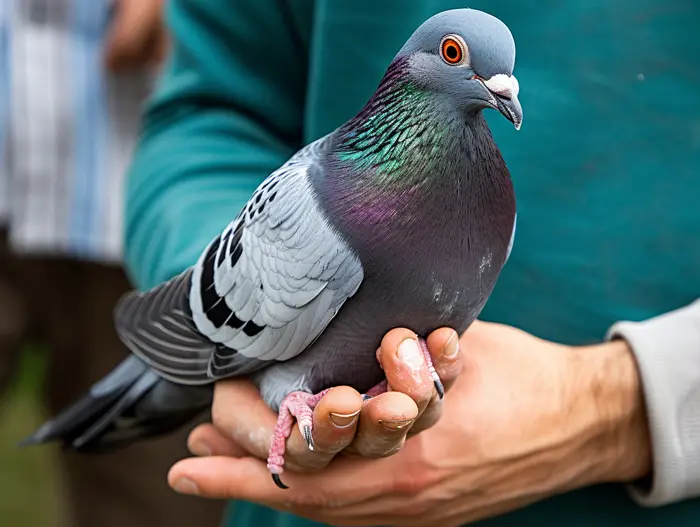
Observational Learning and Consistent Presence
Pigeons are intelligent birds that are highly observant. Through consistent interaction with humans in urban areas, they have learned to recognize harmless intentions. This recognition is based on their ability to observe and learn from our behaviors. Pigeons can discern between harmful and non-harmful behaviors, making them comfortable around humans who pose no threat.
Body Language and Positive Reinforcement
Pigeons are astute in reading body language. They pay attention to our stance and movements, which helps them determine whether we mean them any harm. Additionally, pigeons respond positively to friendly gestures and behaviors. When they encounter people who exhibit kind and non-threatening body language, they are more likely to feel at ease and approach us.
Associations with Food
Another key factor in pigeons’ comfort around humans is their dependence on human-provided food. Pigeons have learned to associate certain human behaviors with the presence of food, such as picnicking or eating in public spaces. Through this association, they have come to perceive humans as a source of sustenance. This reliance on our food sources contributes to their overall comfort and familiarity with us.
By understanding these aspects of pigeons’ social behavior and their perception of humans, we can appreciate how they have adapted to coexist peacefully in urban environments. Their ability to recognize harmless intentions, through consistent presence, observational learning, body language, and positive reinforcement, allows them to thrive alongside us.
In the next section, we will delve into the remarkable navigational skills exhibited by pigeons and how it aids their survival in urban landscapes. Stay tuned!
| Aspects | Impact on Pigeons’ Comfort around Humans |
|---|---|
| Observational Learning and Consistent Presence | Promotes recognition of harmless intentions through learning from human behaviors |
| Body Language and Positive Reinforcement | Helps pigeons distinguish friendly demeanor and approachability |
| Associations with Food | Contributes to pigeons’ perception of humans as a reliable food source |
Conclusion
Pigeons’ lack of fear towards humans can be attributed to their remarkable ability to recognize harmless intentions and their dependence on human-provided food sources. Through consistent presence, observational learning, body language, and positive reinforcement, pigeons have learned to distinguish between harmful and non-harmful behaviors, allowing them to coexist peacefully with humans in urban environments. Additionally, their adaptation to scavenge for food in urban areas has led them to associate certain human behaviors with the presence of food, further contributing to their comfort around humans. These adaptations have allowed pigeons to thrive in urban landscapes and establish a successful coexistence with humans. In the next section, we will delve into the fascinating navigational skills exhibited by pigeons and how it aids their survival in urban environments.
